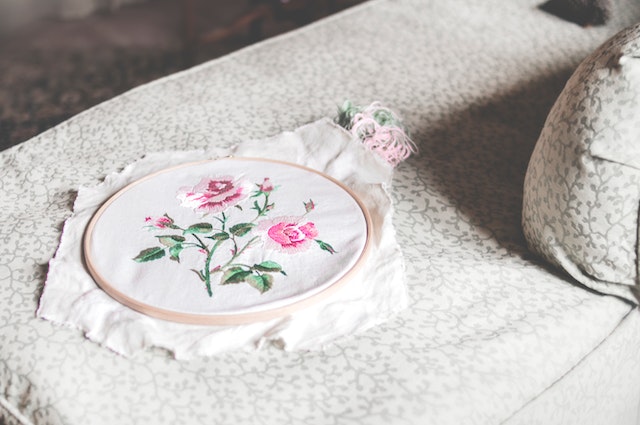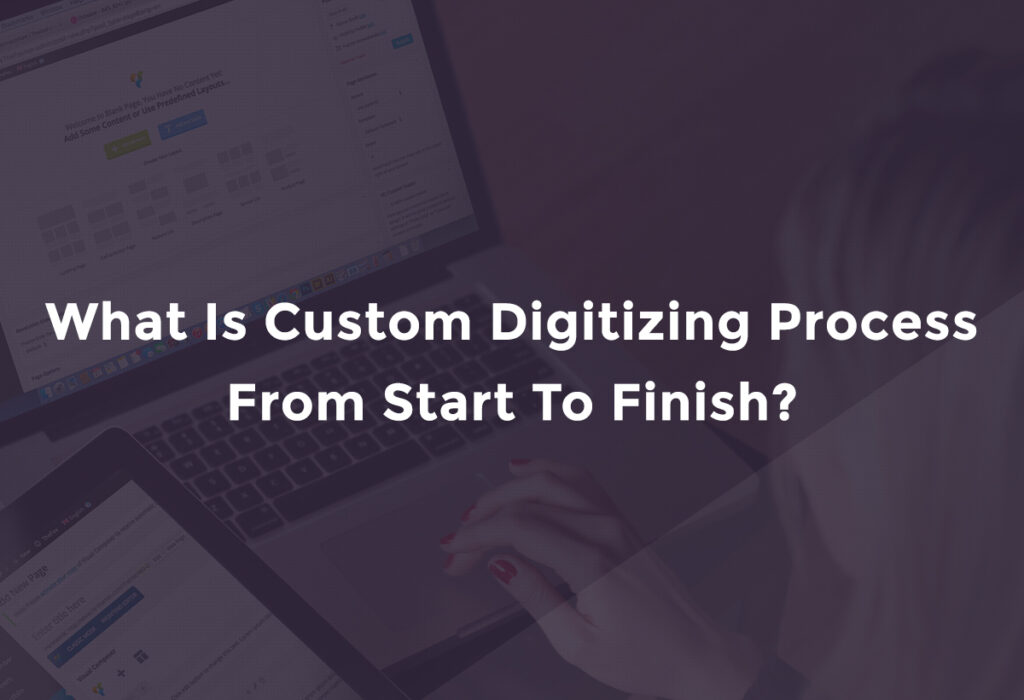Embroidery digitizing blends art and technology. Learn essential tips on choosing the right software, understanding file formats, mastering stitch types, and optimizing designs for high-quality embroidery. Explore advanced techniques like 3D puff and applique digitizing, and discover how to ensure your designs are both beautiful and machine-friendly.
Embroidery digitizing is an intricate process that transforms designs into machine-readable formats. As an embroidery digitizer, mastering this skill requires understanding various embroidery software, design techniques, and file formats. Whether working on standard designs or exploring advanced techniques like 3D puff embroidery and applique digitizing, knowing the right tips and tricks can significantly enhance your work. This article will delve into essential strategies for creating high-quality embroidery design files. From choosing the best machine embroidery files to optimizing embroidery file formats, these insights will help you achieve professional and stunning results.
What exactly is embroidery digitising?
Embroidery Digitizing service is a new type of bespoke embroidery done on clothes utilizing precision-based artwork created using digitized embroidered patterns. These digitized signatures can be custom-made or based on real-life photos, pictures, or visualizations that can be replicated digitally and turned into a suitable format of digital embroidered design. This design is then employed in automated embroidery machines, which can replicate the patterns exactly as they were created by hand for the buyer.
Embroidery Digitizing reduces the number of man hours needed for embroidery design and fabrication on clothes and textiles. It allows even the most difficult and sophisticated patterns to be digitally imitated on a fabric.
Best Embroidery Digitizing Tips and Tricks
If not designed and done correctly, digitizing embroidery may be fairly difficult. There is a reason why there are so few Embroidery Digitizing service providers on the market. Here are some pointers to remember while making digital embroidery designs:
1. Choose the Right Embroidery Software
Selecting the appropriate embroidery software is the first step toward successful digitizing. High-quality software options include Wilcom, Hatch, and Brother PE-Design. These tools offer a range of features that simplify stitch file creation, vector art for embroidery, and more. Investing in robust software can significantly enhance your digitizing capabilities.
2. Understand File Formats
Understanding embroidery file formats is crucial for successful digitizing. Common formats like PES, used by Brother and Babylock machines, and DST, compatible with many commercial machines, are essential knowledge for any embroidery digitizer. Ensuring your designs are saved in the correct format for your machine is vital to avoid compatibility issues and ensure smooth, flawless embroidery.
Moreover, selecting the appropriate format for the specific design and fabric is equally important. A design in an incorrect format for the chosen fabric can lead to unsatisfactory results, potentially ruining the final embroidered piece. Always ensure you choose the right format to create digitized embroidery designs that meet the highest standards of quality and precision. This careful consideration will help achieve professional and reliable results every time.
3. Master Stitch Types
Familiarize yourself with different stitch types, such as satin, fill, and running. Each type serves a specific purpose and affects the final appearance of the embroidery. For instance, satin stitches are ideal for lettering and borders, while fill stitches work well for larger areas. Understanding these can greatly enhance the quality of your embroidery design.
Tips for Mastering Stitch Types:
- Practice Regularly: The more you practice, the better you’ll become at executing different stitch types. Start with simple designs and gradually move to more complex ones.
- Use High-Quality Materials: Invest in good-quality embroidery threads, needles, and stabilizers to ensure your stitches look their best.
- Experiment with Settings: Adjust the stitch length, density, and angle to see how different settings affect the final outcome.
- Learn from Experts: Watch tutorials, take classes, and join embroidery communities to learn from experienced digitizers.
- Plan Your Design: Before you start stitching, plan your design carefully. Consider the stitch types that will best achieve the desired effect and lay out your design accordingly.
4. Optimize Your Designs
When creating custom embroidery digitizing designs, optimizing them for embroidery is crucial. Simplify complex designs to ensure they translate well into stitches. Too many details can cause the design to become cluttered and less legible. Use vector art for embroidery as a starting point, as it provides clean and scalable designs.
5. Explore Advanced Techniques
Techniques like 3D puff embroidery and applique digitizing can add dimension and interest to your designs. 3D puff embroidery creates a raised effect, perfect for hats and bold logos. Applique digitizing involves layering fabric pieces, adding texture and depth. Both digitizing techniques require specific digitizing skills and adjustments in stitch file creation.
6. Seek Professional Help
If you’re offering embroidery design services, consider partnering with experienced digitizers for high-quality embroidery digitizing. Professional services can provide affordable embroidery digitizing with fast turnaround embroidery digitizing, especially for bulk orders. This ensures your clients receive top-notch designs promptly.
7. Continuous Learning
Embroidery software training is vital for staying updated with the latest features and techniques. Many software providers offer tutorials and courses. Continuous learning will refine your skills and keep you ahead in the competitive market.
8. Offer Design Consultation
Providing embroidery design consultation can enhance your service offerings. Advising clients on design modifications, fabric choices, and stitch types can produce better final products. This positions you as an expert and builds trust with your clients.
9. Test Your Designs
Always test your machine embroidery files before mass production. Stitching out a sample allows you to identify and correct any issues, ensuring the final product meets your quality standards.
Testing your embroidery designs before mass production ensures quality and consistency. Start by stitching out a sample on a fabric similar to your final material, using a stabilizer to prevent puckering. Inspect the sample for incorrect stitch density, thread tension, or misaligned elements. Make necessary adjustments in your digitizing software and retest until the design is perfect. Common problems include puckering from dense stitches, thread breaks from incorrect tension, and misaligned stitch types. Document your findings to improve future designs. Effective testing saves time and resources and enhances your reputation as a skilled digitizer.
10. The practical application of Layering methods
The layering Technique is a one-of-a-kind skill solely applicable to embroidered patterns. Embroidery designs have a natural 3D look that may be improved by carefully layering them. A Digitizer service must guarantee that the image has true depth by correctly layering the base and front designs to bring the image’s inherent depth and beauty to life.
11. Reduce Auto Digitization to a Minimum
Although several software programs on the market these days can auto-digitize any image, only a competent embroidery digitizer with technical know-how can bring the design to life using software tools, depth, color, and image integrity.
12. Density of Stitches
Most embroidery digitizers skip stitch density, which might be a huge digitizing mistake. Optimizing stitch density based on the type of embroidery design makes the embroidery light, crafty, and easier to wear on a piece of fabric.
13. Streamline Your Workflow
Efficiency is key in embroidery digitizing. Create a streamlined workflow for bulk embroidery digitizing, which includes organizing your files, using templates, and setting up a systematic approach to digitizing. This helps in managing large orders without compromising on quality.
14. Specialty Techniques: Applique, 3D Puff & More
Embroidery digitizing extends beyond basic stitches. Advanced techniques like applique digitizing allow you to incorporate different fabrics into your embroidery, while 3D puff embroidery adds a raised, dimensional effect. Explore these techniques to create unique and eye-catching designs.
Conclusion
Embroidery digitizing combines technical skills with creative artistry. You can elevate your digitizing skills by choosing the right embroidery software, understanding file formats, mastering stitch types, and continuously learning. Whether you’re working on custom projects, offering embroidery design services, or handling bulk orders, these tips and tricks will ensure your designs are professional, high-quality, and ready for embroidery.
These tips and tricks can transform you from a novice digitizer into a skilled professional. Remember, practice makes perfect. The more you digitize, the more comfortable and confident you’ll become. Don’t be afraid to experiment, explore new techniques, and seek out resources to further your knowledge. With dedication and a passion for embroidery, you can unlock the full potential of custom embroidery digitizing and create truly stunning embroidered masterpieces.


